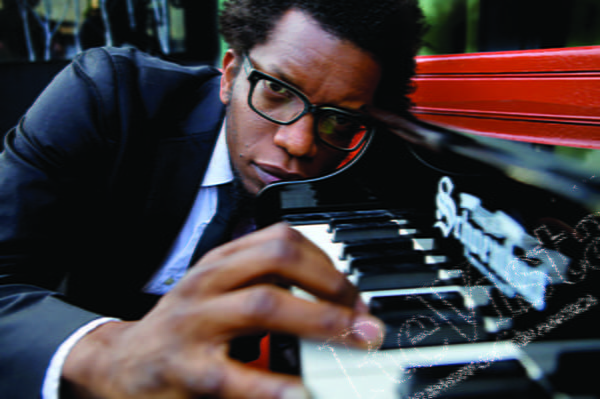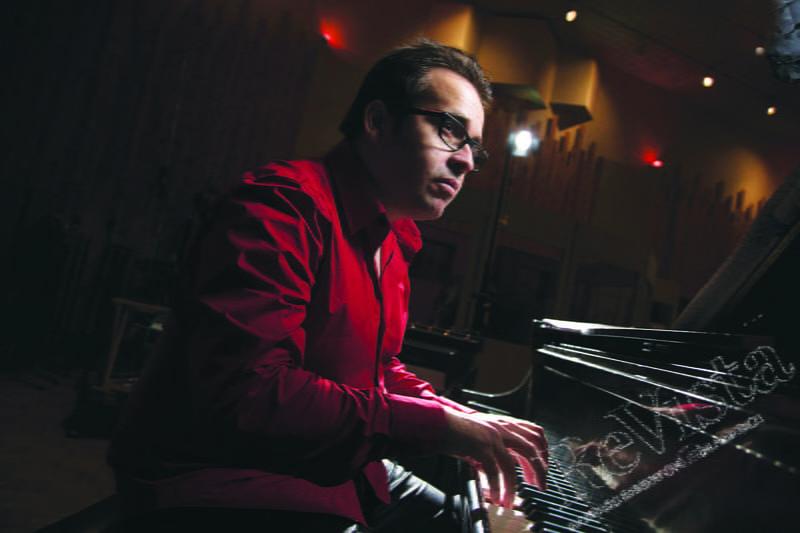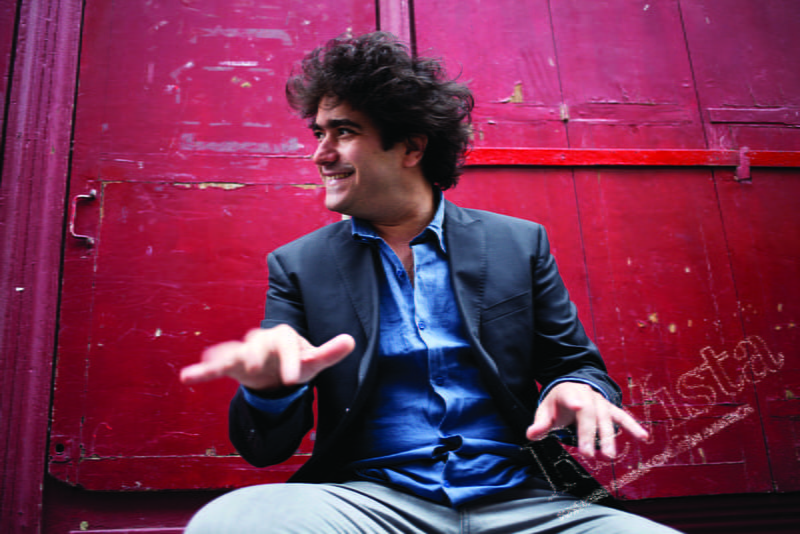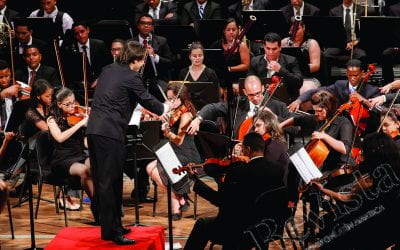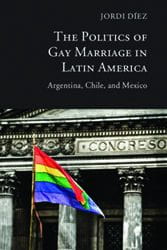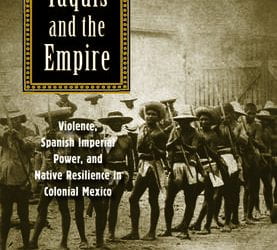Contemporary Cuban Pianists
A History in Notes
Music fans might think of Cuba in terms of salsa or nueva trova, but the country’s pianistic tradition has built its world reputation. Few countries have had pianists as gifted as Cuba: from the 19th century, with the likes of Cervantes, Saumell and Espadero, to the 20th and beyond, Cuba has been blessed with figures such as Gonzalo Roig, Antonio María Romeu, Ernesto Lecuona, Lilí Martínez and Peruchín (Pedro Justiz), not to mention Bebo Valdés, Rubén González, Frank Emilio Flynn and Emiliano Salvador. They were followed by a host of other pianist-composers like Chucho Valdés, Ernán López-Nussa, Hilario Durán, Omar Sosa, Gonzalo Rubalcaba, and Arturo O’Farrill, the last three born in the 1960s. They have been followed by new waves of pianists, but in what follows the focus will be on three pianists from the 70s and 80s who loosely fall within the tradition of “Latin Jazz” and contemporary music.
Aruán Ortiz (1973), born in Santiago de Cuba of Haitian descent, was trained as both violinist and pianist. While he draws on Afro-Cuban forms, he is at ease with classical and free improvisation as well. Ortiz is hard to pin down, as he can go from hard post-bop idioms (as in his first two albums, Volume 1 and Alameda; 2005, 2009) to the rigorous exploration of sound textures evident in his album with Bob Gluck (on piano and Moog Synthesizer; Ortiz, piano and computer) to a contemporary re-interpretation of tumba francesa and Cuban song with the blues as in his Santiarican Blues Suite (2012). A recent album, 23:54 Get Moving (2014), a trio with saxophonist Biagio Coppa and drummer Rob García, has Ortiz on piano and electronics, going from Monkish riffs to eerie atmospherics to funk.
Overall, Ortiz is a restrained pianist: he does not go in for dramatic changes in dynamics, crashing chords, splashy ornamentation, Lecuona-ish lyricism or son montuno guajeos. His approach, while fluid, is slightly jagged and with a keen sense of the overall architecture of the song. He can move up and down the keyboard with considerable velocity but not in a way that calls attention to itself (a la Chucho Valdés or Art Tatum). Both his first albums and the recent live recording Banned in London (2013) illustrate this: on tracks like “Jitterbug Waltz” (Fats Waller) and “Orbiting” (Ortiz), he performs extended solos, and despite some Tynerish flourishes, the notes come out soft, deliberate, as if a kitten were walking over the keys.
His Santiarican Blues Suite is an ambitious project, originally written as a ballet for the José Mateo Ballet Theater in 2011 (titled “Pagan or Not”). The suite has five movements, beginning with “Diaspora,” and opens with percussionist Mauricio Herrera playing a slow beat on timpani, followed by a dark mournful segment on strings which quickly turn spiky, then joined by a dissonant flute. Eventually, the strings are accompanied by the tahona rhythm (brought from Haiti by former slaves and considered a precursor of the rumba). The tahona also bears some similarities to the tumba francesa, prominently featured in the second movement, “Pa’l Monte” (To the Hills), which has inspired singing against the rhythmic presence of the catá. It is followed by “San Pascual Bailón” (part III), a Catholic reference, but musically alludes to the danzón tradition, originally influenced by what was called the tango haitiano. “Sagrado” (IV), inspired by Sindo Gary’s “Perla Marina,” begins in a slow and melancholy fashion with string instruments dominating. Slowly it begins to crescendo, with percussion joining in, then slows down with strings accompanied by a gentle flute. The final and longest movement, “Jubilee/Comparsa.” opens with violin and percussion, then flute. It continuously quotes and reworks a Cuban classic “Drume Negrito,” but in bits and phrases. Slowly the rhythm picks up, then accelerates into a flurry of percussion (becoming a comparsa) with strings and piano providing a strident counterpoint with jabbing notes and ends with a final beat of the timpani. Ortiz’s composition is fresh, highly creative; it takes folk traditions and reinserts them into a contemporary idiom, and is a true tribute to the Haitian legacy of Cuban music, often overlooked.
Manuel Valera, born in Havana in 1980, came to the United States in 2000. His first album as leader was Forma Nueva (2004) and since then he has recorded ten albums. Valera has a rich expansive sound, one that blends Cuban percussiveness with jazz idioms. From the first note his music has an undeniable appeal, with the notes cascading gracefully in sparkling legato lines. Valera can swing with the best of them, but he is equally adept at standards, ballads and more meditative pieces. Seamus Blake’s Getz-like hard bop sound, on Valera’s first three albums, works wonderfully with the pianist, adding fire to the Cuban’s elegance. “Forma Nueva,” “Simplicity” and “En cinco” are great up-tempo examples of their complementarity, each propelling the other to stretch out. Valera’s interpretation of a standard “Say it (over and over again)” is soulful, ruefully lingering on the notes. It is an homage to Coltrane’s Ballads, which features the Jimmy McHugh composition. In the liner notes Valera says that “Say it…” is the “best ballad of all time.” He may be right and his version states the case eloquently.
The centerpiece of his second album (2004) is Silvio Rodriguez’s “O Melancolía” (the liner notes provide both original Spanish lyrics and a translation to English, but the song is instrumental) and again Valera works with Seamus Blake, this time on soprano, to recreate Silvio’s classic. They capture not only the sadness of the original, but a kind of sensuality as well. In his next album (Historia, 2005) he reprises some Cuban classics (Cervantes, Carrillo and Silvio, again). The Cervantes (“Adiós a Cuba”), done in a trio format, follows the original but Valera then adds some thoughtful improvisational riffs that give the piece a bounce without losing the sense of longing envisioned by Cervantes.
In Vientos (2007), with a core quartet (Joel Frahm on sax, James Genus on bass, Ernesto Simpson, drums), Valera adds a woodwind quintet that includes Anat Cohen on clarinet. The woodwinds are featured on seven of the twelve compositions—all by Valera—and they are not just there as charming accompaniment; they are integral to the piece even if it is the jazz quartet that performs the solos. Especially effective are “A la Interperie” and “Rapsodia,” which blend fierce jazz or blues motifs with the more classical sounds of the woodwinds. Valera was trained classically, as are most Cuban pianists, although originally he was a saxophonist, which might explain his skillful use of the instrument in his different groups.
After recording a trio album (Currents, with Genus and Simpson, 2009) Valera formed a group called New Cuban Express (sextet or septet format) and under this configuration released three albums (2012-2014). The sound is bigger, the percussion a bit more complex and the music high octane with an unmistakable Latin groove. He is definitely seeking to take “Latin Jazz” (whatever that is) in a new direction. In his remarks on the third of the New Cuban Express recordings (In Motion, 2014), critic Raul da Gama says “His statements are elaborate as he expands on the geometry of the melody making wondrous structures in a high-wire act that is breathtaking to behold.” This has been Valera’s trademark from the beginning.
These “wondrous structures” are also evident in his most recent work, one a solo album (Self-Portrait, 2014). In a more contemplative work, Valera explores his classical side with three impromptus (dedicated to Satie, Gershwin, and Satie), and tackles three jazz giants (Monk, Evans, Bud Powell) and two Latin composers (Agustín Lara, Eliseo Grenet), but most of the compositions are original. The first cut, “Spiral,” is a gleaming, aquatic foray that then builds into a soaring bridge, but always tempered by steady work by the left hand. He returns to the song on his recent live album (Live at Firehouse 12, 2015) with a trio (with bassist Hans Glawischnig and drummer EJ Strickland) and Valera’s driving arpeggios, with bass thumping almost frenetically and hyper-kinetic drum work, are mesmerizing. The trio deftly manages Wayne Shorter’s “Footprints” and offers an elegant and lilting version of the “Intermezzo Sinfónico” from Cavalleria Rusticana, as well as brilliant up-tempo tunes like “Lírico” and “Century.”
At 35, Valera has already recorded eleven albums as a bandleader and mastered different formats (solo, trio, quartet, septets, quartet with woodwind, quintet); his symphonic approach, his impeccable execution, attention to structure and unerring sense of timing are not a question of promise anymore. He is a major presence and will surely continue to be so for a long time to come.
Harold López-Nussa, born in Havana in 1983, comes from a musical family; his uncle is pianist Ernán López-Nussa, and his brother, Ruy Adrián, is an accomplished drummer who is part of his trio. His first album (Sobre el atelier, 2007) was a solo effort, receiving a contract after winning a prize for a “Montreux Jazz Solo Piano Competition” in 2005. Half the compositions are originals, and López-Nussa exhibits his trademark skills: a nimble energetic style with fast runs up and down the piano, an ability to change rhythms, a jabbing intensity, sudden stops which gave way to a flurry of notes. Like many Cuban pianists, he cut his teeth on a Chucho Valdés classic, “Mambo influenciado,” handled with aplomb and humor. His second effort, Herencia (2010), is a trio album with his brother and a great young bassist Felipe Cabrera (Mayquel González is on trumpet on two tracks). The recording contains a special treat: Omara Portuondo sings a Noel Nicola song, with López-Nussa adding romantic flourishes. Overall, an upbeat album, and the two songs with trumpet are bright, warm, and swing hard.
Canciones (2011) is the only album where the great majority of the songs are not his own. He focuses on Cuban composers (except for one by Jobim, another by Fito Páez). Working in a trio format but adding instruments —González plays trumpet on four tracks—López-Nussa plays classics such as “Contigo en la distancia” and “A felicidade.” Perhaps one of the most compelling numbers is his rendition of Carlos Varela’s “Detrás del cristal” which begins with the piano but is joined by soprano sax and strings that are both lush and haunting, and reminds one of Piazzolla’s film music (minus the bandoneón, of course). His version of Pablo Milanés’s “Para vivir” begins with a jagged riff on piano, almost haltingly, and then flies off into a catchy son.
El pais de las maravillas (2011) is a trio album that features David Sánchez on four tracks. “Guajira”, written by Ruy Adrián, begins with hand-clapping, features nice percussion in a fast-flying melody with a breathless pace that has López-Nussa hammering away at the piano in riffs or ostinato which continues to the end. The songs with Sánchez (except for one) all feature son-inflected idioms with López-Nussa diving into montuno-like riffs and trading off with Sánchez, who plays with a sweet ferocity.
New Day (2013) is a truly joyous work from the beginning (“A degüello”) and barrels forward deliciously all the way to the end: there isn’t a clunker in the album. It is followed by a duet with his brother, titled “Cimarrón”(Runaway Slave). López-Nussa begins with a vamp in the upper register and plays the melody with his left hand, while his brother plays the cajón—a lively and irresistible tune. “Paseo” rumbles out like a force of nature, even if it does have quiet moments with fine work by bassist Gastón Joya. It is hard to imagine a piano trio getting such a huge sound; one critic has described the piece as “mysterious but impassioned.” Magic maybe, but mystery? The only mystery is why does it end after only seven minutes? The duet “Eso fue hace 20” (That Was Twenty Years Ago) with Mayquel González, is a gorgeous ballad, whose title evokes Vera’s “Veinte años,” but does not actually quote it; instead it captures the longing of the original but with its own charm.
Most recently López-Nussa has recorded an album with Senegalese bassist-vocalist Alune Wade (Havana Paris Dakar, 2015), with a mix of Cuban jazz, Afropop, and covers of classics from Africa (Mali, Senegal, Cape Verde, Algeria, and the Congo). The songs have an instant appeal and López-Nussa’s work, as always, is top-notch and discerning.
It would be unfair to finish without recognizing some other significant piano voices: Roberto Fonseca (1975-), Aldo López Gavilán (1979-), David Virelles (1983-), Alfredo Rodríguez (1985-), Osmany Paredes (1983-) and Fabián Almazán (1984-). Fonseca’s Akokán (2009), Almazán’s Rhizome (2013), Virellles’s Continuum (2012) and Mbokó (2014), and Rodriguez’s Invasion Parade (2014) are world-class creative projects that are exhilarating, and yes, sometimes demanding music. As they continue to rework their Cuban roots while drawing on jazz, blues, classical, African, contemporary and electronic idioms, these composer-musicians redefine the Cuban pianistic tradition as they bring it fully into the twenty-first century.
Winter 2016, Volume XV, Number 2
Alan West-Durán (Cuba, 1953) is a poet, translator, critic, and essayist. He is the author of two books of poems, as well as a book of essays Tropics of History: Cuba Imagined (1997). He is currently writing a history of Cuba through its culture. West-Durán is a contributor to the website “Panoramas” and is editor of the webzine “Cuban Counterpoints.”
Related Articles
When Music Changes Lives
English + Español
n 2004, I got a surprising phone call from Santo Domingo on one cold winter night. I was then studying musical composition in Strasbourg, France, a great opportunity for a young Dominican…
The Politics of Gay Marriage in Latin America
Despite its recent successes, the gay rights movement in Latin America is generally ignored in discussions of contemporary Latin American politics. Even students of Latin American social…
The Yaquis and the Empire
Winner of the 2015 Latin American Studies Association Social Science Book Award and runner-up for the 2015 David J. Weber-Clements Prize of the Western History Association, The Yaquis…

